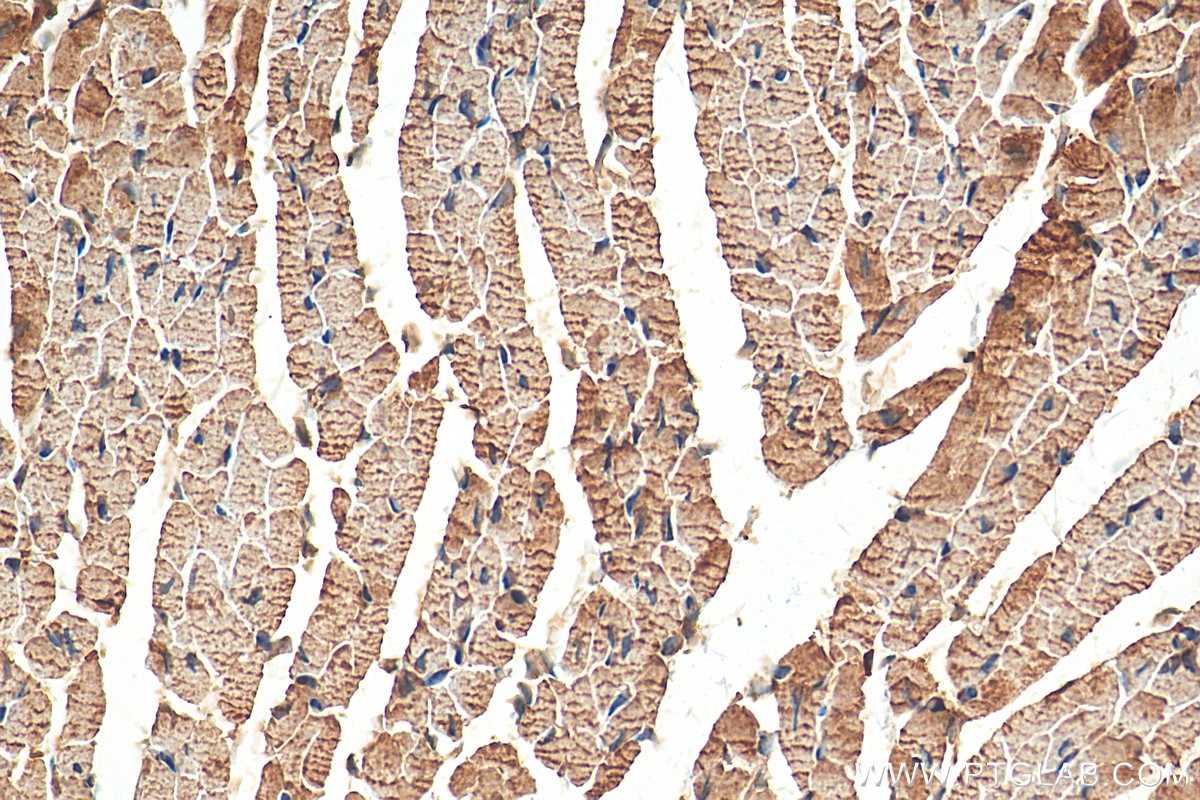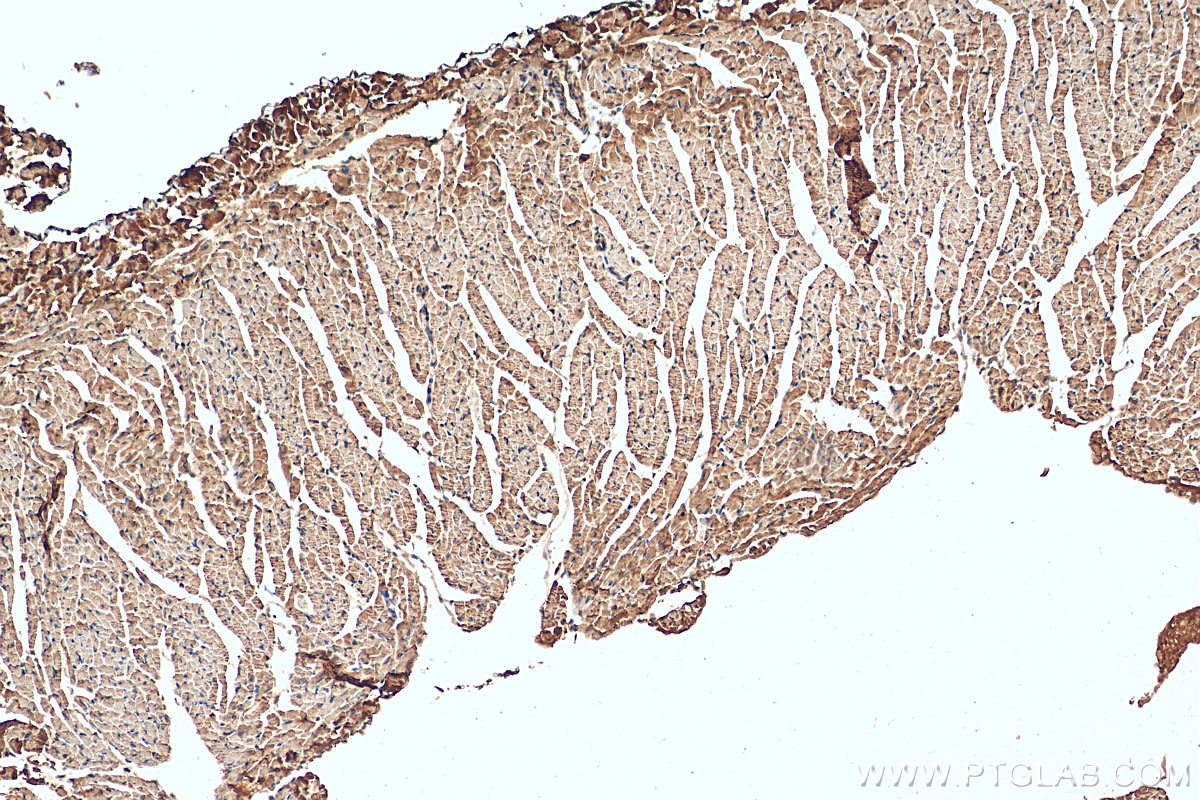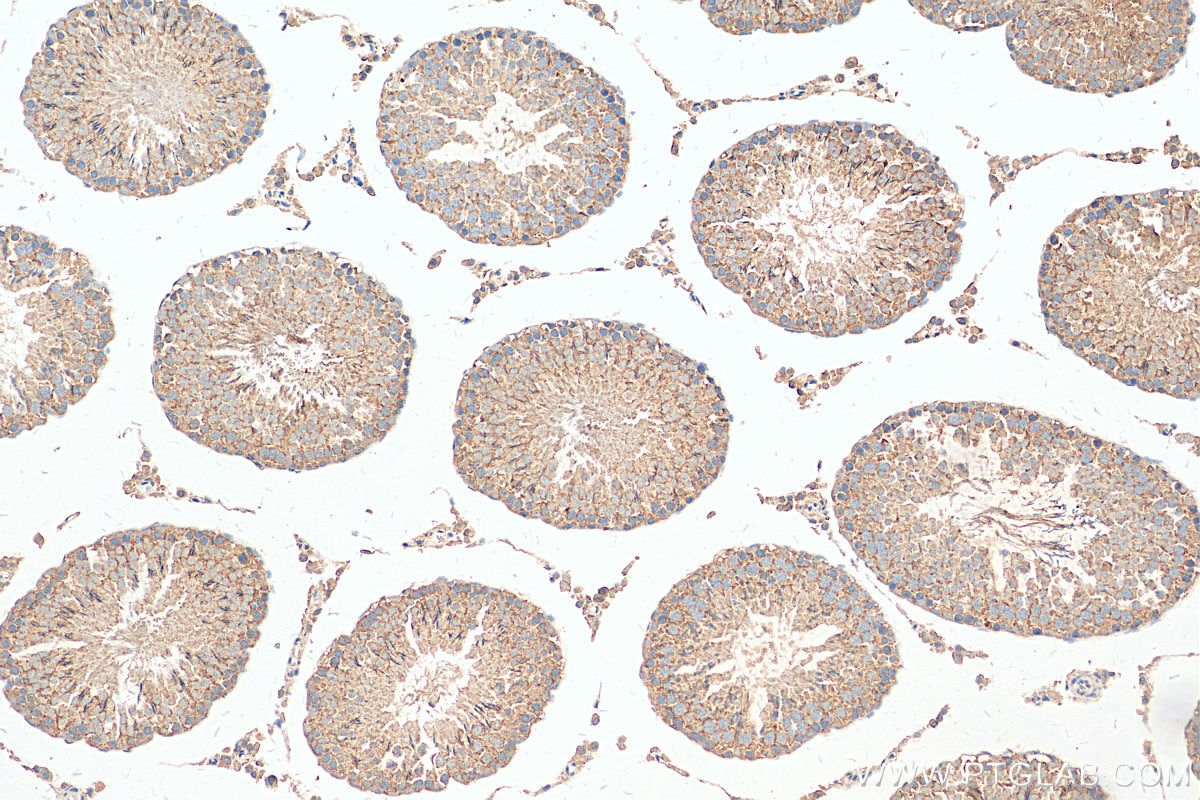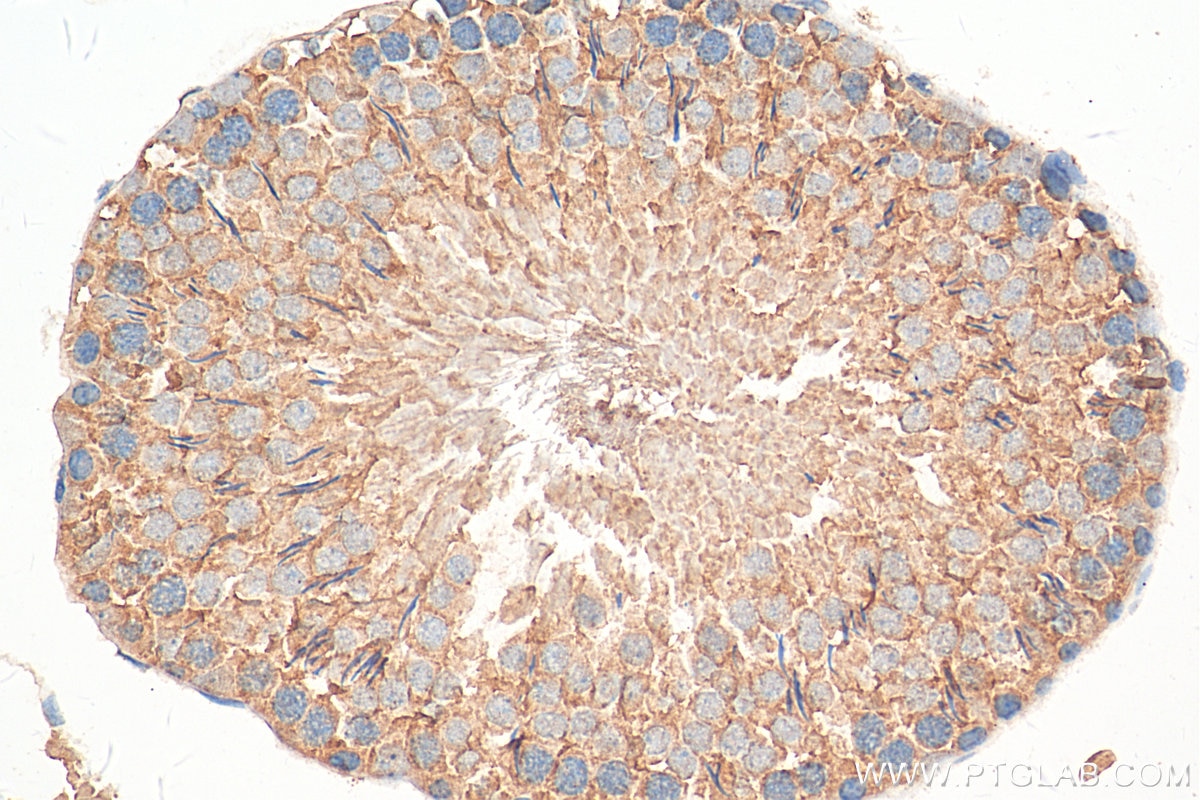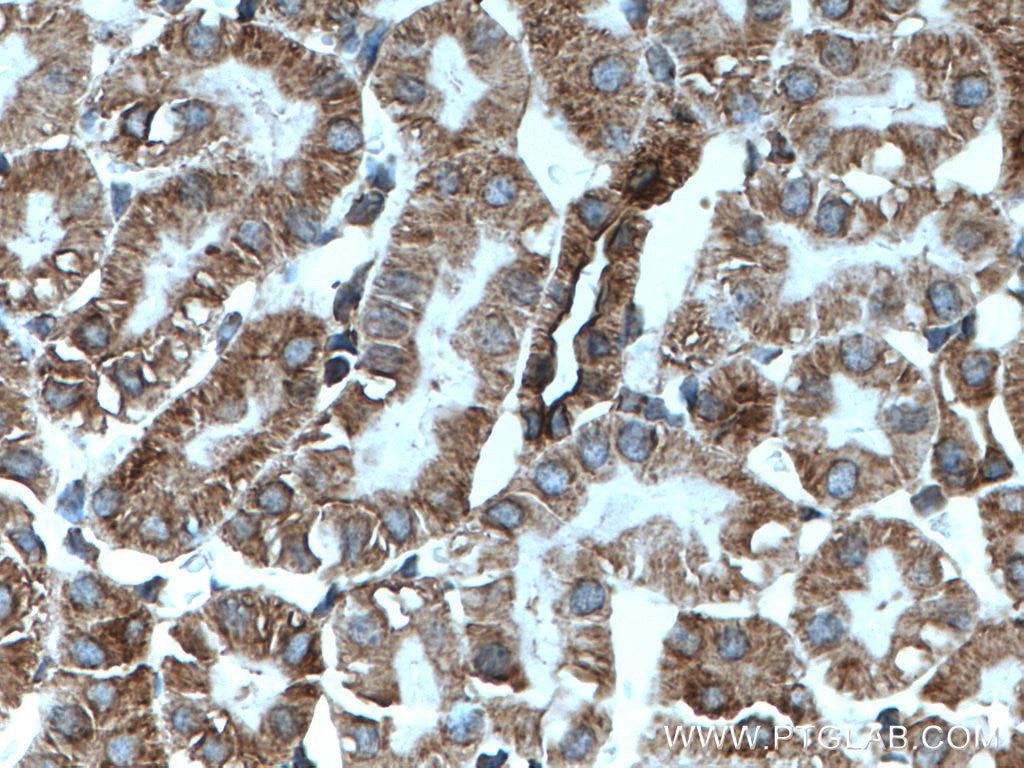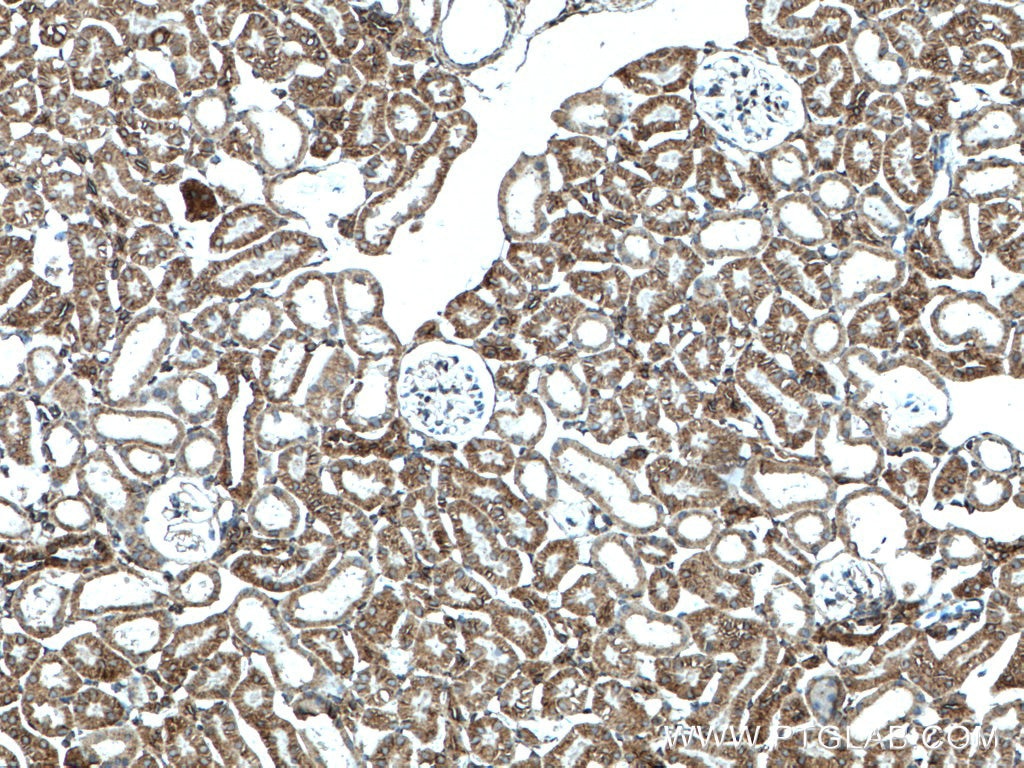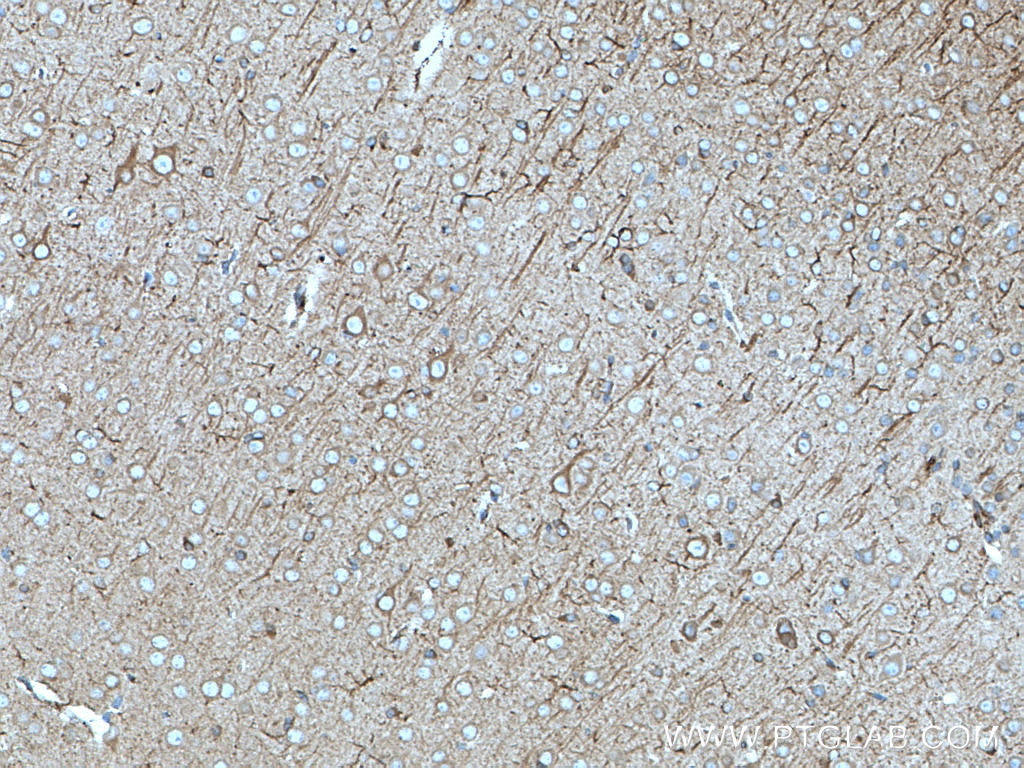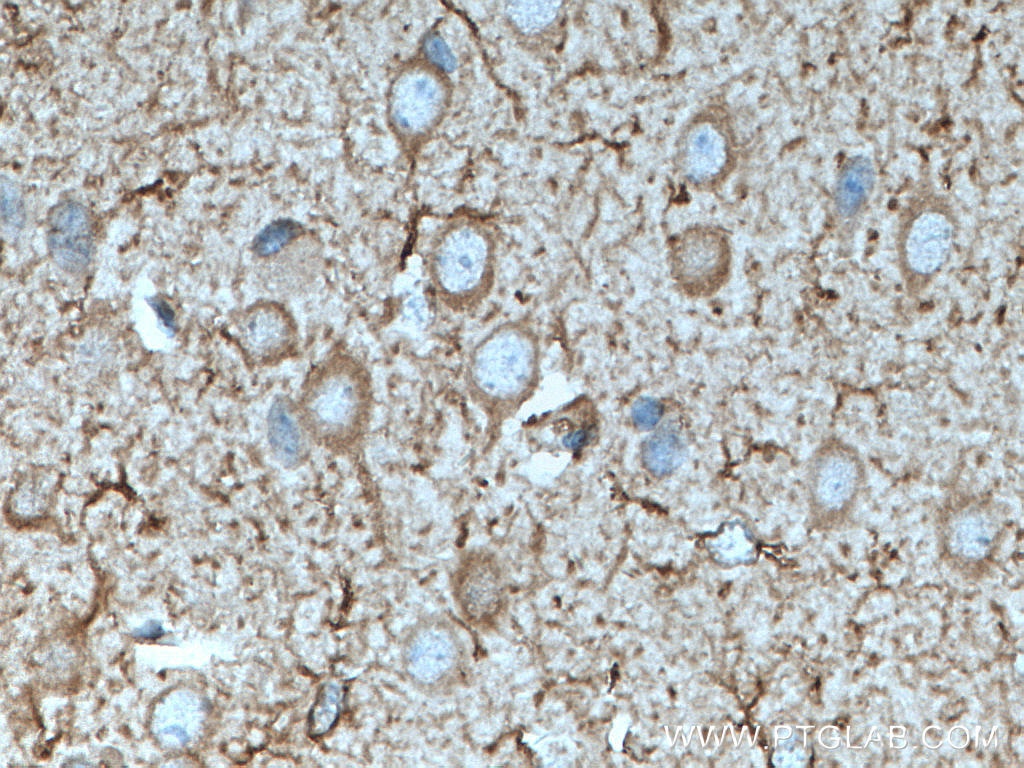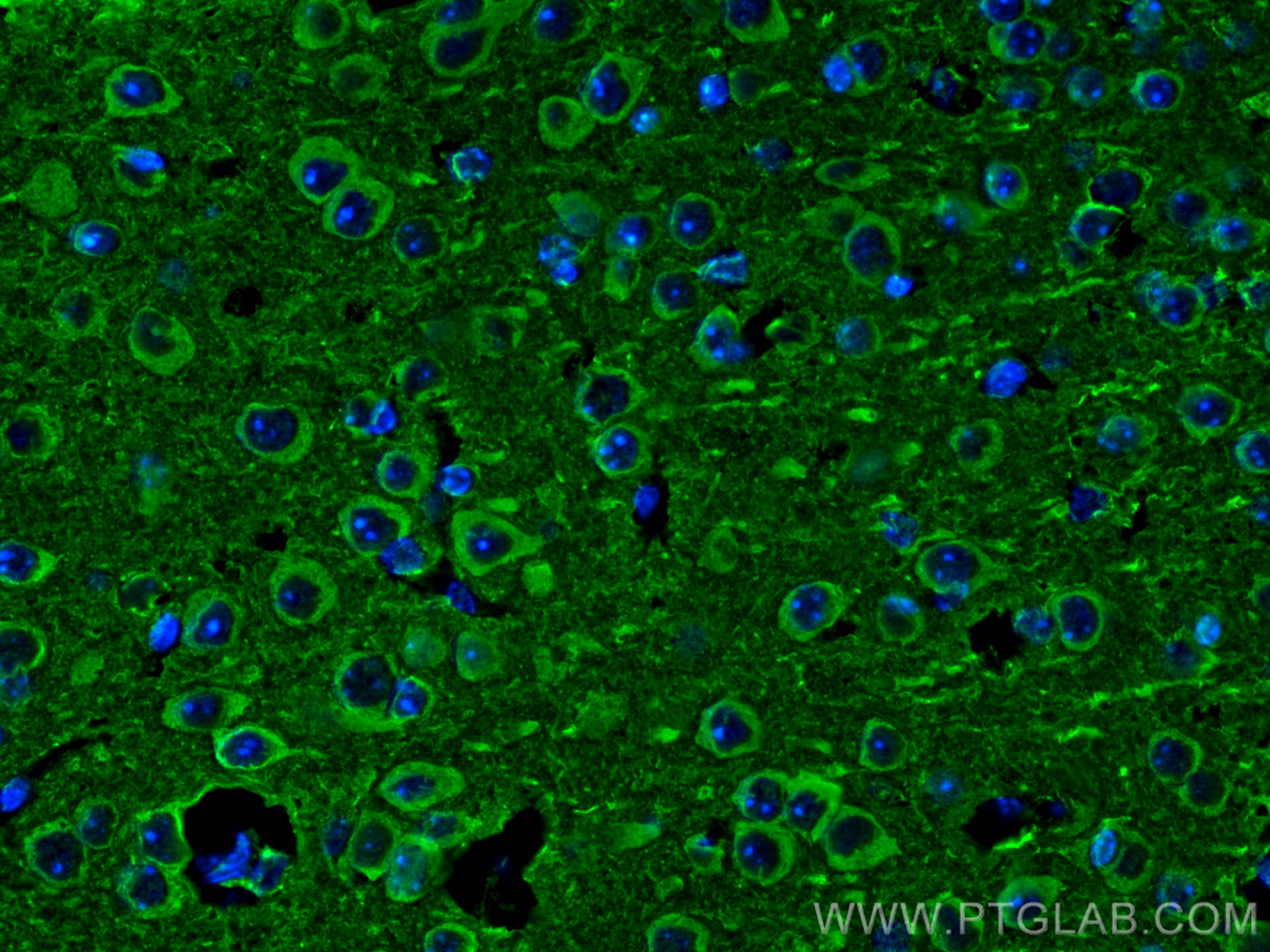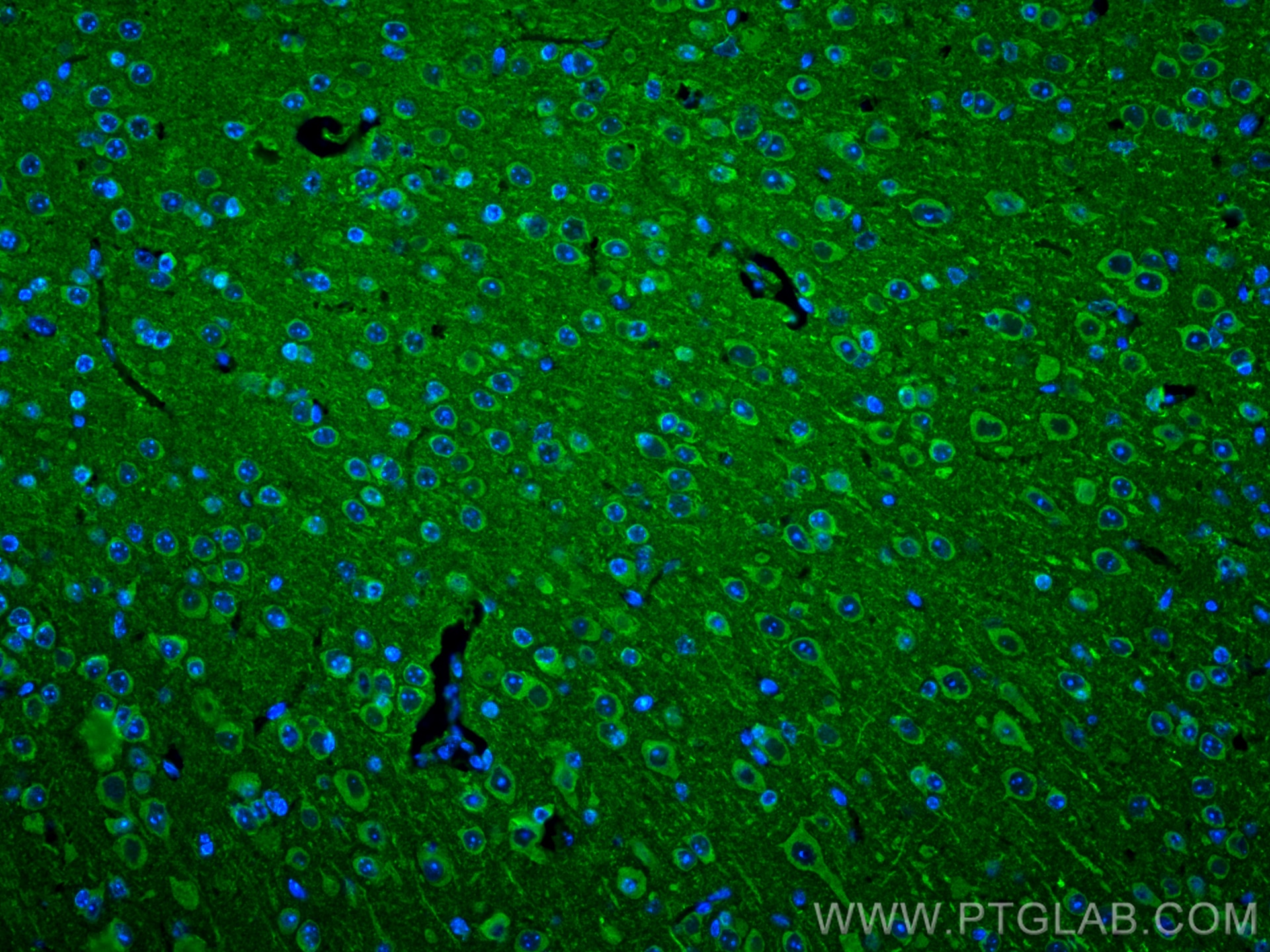Anticorps Polyclonal de lapin anti-nNOS
nNOS Polyclonal Antibody for IHC, IF-P, ELISA
Hôte / Isotype
Lapin / IgG
Réactivité testée
Humain, rat, souris et plus (2)
Applications
IHC, IF-P, ELISA
Conjugaison
Non conjugué
N° de cat : 18984-1-AP
Synonymes
Galerie de données de validation
Applications testées
| Résultats positifs en IHC | tissu cardiaque de souris, tissu cérébral de souris, tissu rénal de souris, tissu testiculaire de rat il est suggéré de démasquer l'antigène avec un tampon de TE buffer pH 9.0; (*) À défaut, 'le démasquage de l'antigène peut être 'effectué avec un tampon citrate pH 6,0. |
| Résultats positifs en IF-P | tissu cérébral de souris, |
Dilution recommandée
| Application | Dilution |
|---|---|
| Immunohistochimie (IHC) | IHC : 1:50-1:500 |
| Immunofluorescence (IF)-P | IF-P : 1:50-1:500 |
| It is recommended that this reagent should be titrated in each testing system to obtain optimal results. | |
| Sample-dependent, check data in validation data gallery | |
Applications publiées
| IHC | See 3 publications below |
Informations sur le produit
18984-1-AP cible nNOS dans les applications de IHC, IF-P, ELISA et montre une réactivité avec des échantillons Humain, rat, souris
| Réactivité | Humain, rat, souris |
| Réactivité citée | rat, canin, Humain, porc, souris |
| Hôte / Isotype | Lapin / IgG |
| Clonalité | Polyclonal |
| Type | Anticorps |
| Immunogène | Peptide |
| Nom complet | nitric oxide synthase 1 (neuronal) |
| Masse moléculaire calculée | 161 kDa |
| Numéro d’acquisition GenBank | NM_000620 |
| Symbole du gène | nNOS |
| Identification du gène (NCBI) | 4842 |
| Conjugaison | Non conjugué |
| Forme | Liquide |
| Méthode de purification | Purification par affinité contre l'antigène |
| Tampon de stockage | PBS with 0.02% sodium azide and 50% glycerol |
| Conditions de stockage | Stocker à -20°C. Stable pendant un an après l'expédition. L'aliquotage n'est pas nécessaire pour le stockage à -20oC Les 20ul contiennent 0,1% de BSA. |
Informations générales
nNOS belongs to the NOS family. nNOS produces nitric oxide (NO) which is a messenger molecule with diverse functions throughout the body. In the brain and peripheral nervous system, NO displays many properties of a neurotransmitter. NO is a reactive free radical which acts as a biologic mediator in several processes, including neurotransmission and antimicrobial and antitumoral activities. NO is synthesized from L-arginine by nitric oxide synthases. nNOS is a nitric oxide synthase which is highly expressed in skeletal muscle. Genetic variations in nNOS gene are associated with susceptibility to infantile hypertrophic pyloric stenosis type 1 (IHPS1). The antibody can recognize isoform 1,2,4 of nNOS.
Protocole
| Product Specific Protocols | |
|---|---|
| IHC protocol for nNOS antibody 18984-1-AP | Download protocol |
| IF protocol for nNOS antibody 18984-1-AP | Download protocol |
| Standard Protocols | |
|---|---|
| Click here to view our Standard Protocols |
Publications
| Species | Application | Title |
|---|---|---|
Mod Pathol Neuronal distribution in colorectal cancer: associations with clinicopathological parameters and survival | ||
ACS Chem Neurosci Antidepressant-like Effect of Merazin Hydrate Depends on NO/ERK by Suppressing Its Downstream NF-κB or Nonactivating CREB/BDNF in Mouse Hippocampus. | ||
Exp Eye Res Altered transsulfuration pathway enzymes and redox homeostasis in inherited retinal degenerative diseases. | ||
Acta Pharmacol Sin Neuroprotective effects of scutellarin on rat neuronal damage induced by cerebral ischemia/reperfusion. | ||
Biochim Biophys Acta Mol Cell Res NMDA receptor activation induces damage of alveolar type II cells and lung fibrogenesis through ferroptosis | ||
Eur J Pharmacol Suppressive effect of nitric oxide synthase (NOS) inhibitor L-NMMA acetate on choroidal fibrosis in experimental myopic guinea pigs through the nitric oxide signaling pathway |
Avis
The reviews below have been submitted by verified Proteintech customers who received an incentive for providing their feedback.
FH Reyes (Verified Customer) (03-01-2024) | Used nNOS antibody on human cortex brain sections (in red), it worked very nicely
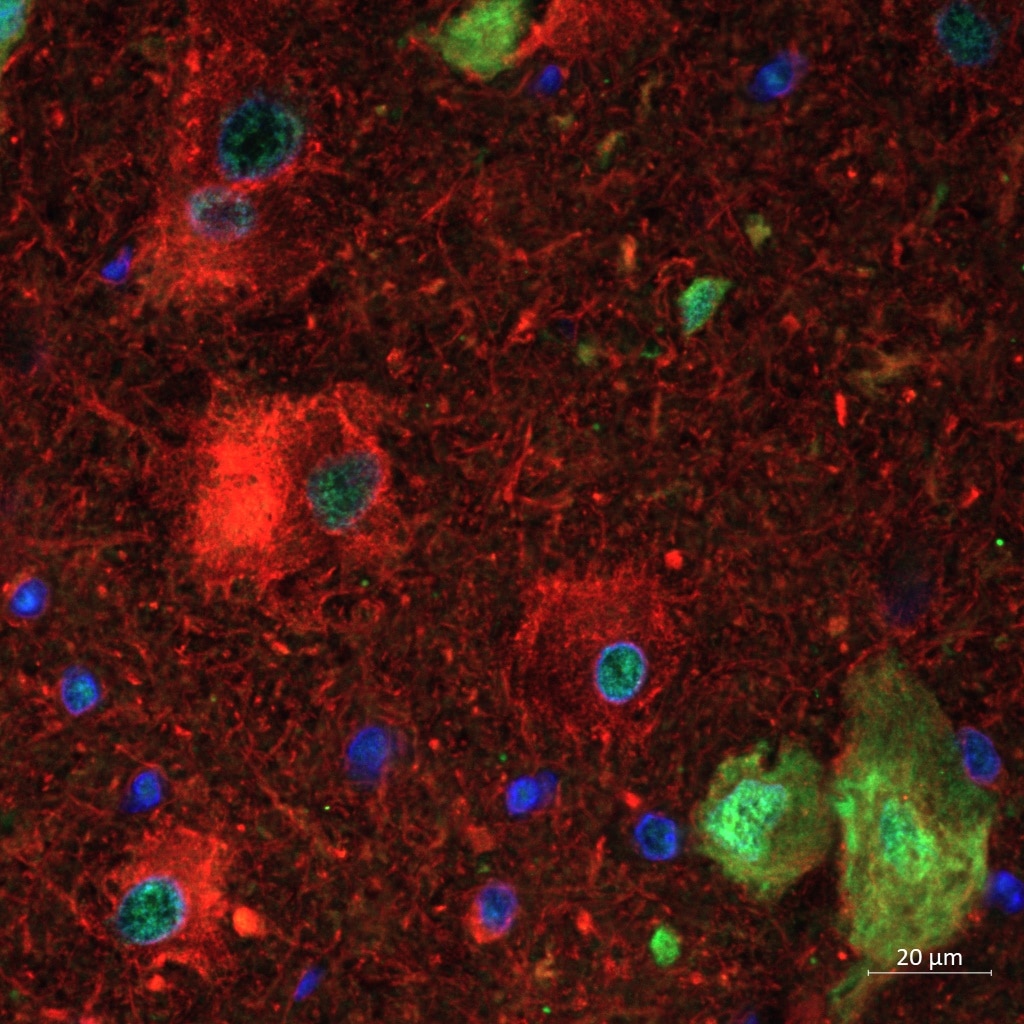 |
